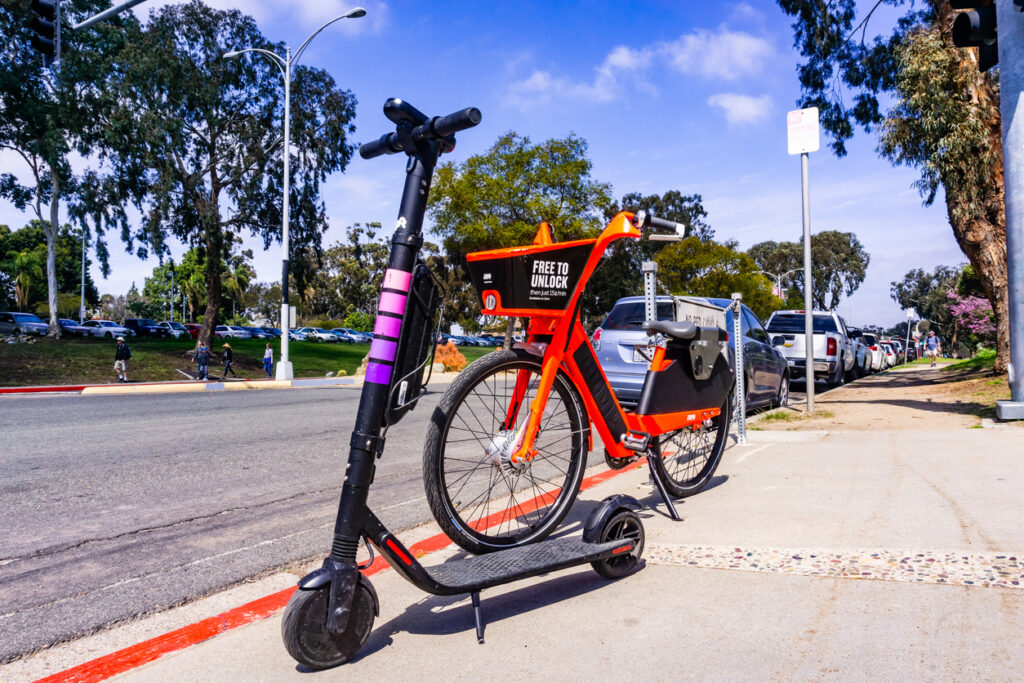
This week’s column is about personal mobility devices: bikes, scooters and other transportation products available for rent through apps, and which we see littered around the Bay Area. In this column, I will answer a reader’s question and share information I have gathered while fighting to pass bills in Sacramento to require personal mobility device providers to carry insurance on the devices and prohibit contract clauses that allow these companies to escape liability for their own negligence.
Harold G. from San Francisco asks:
Q: “I was reading in The Examiner that one of Uber’s JUMP Bikes caused injury to a rider because after he applied the brakes and the bike stopped suddenly and threw him off. (See “Uber failed to tell riders about faulty bike breaks,” published April 17, 2019) The article said that Lyft’s Go Bikes also have defective brakes that have caused injury, but Lyft publicly announced the defect while Uber apparently tried to fly under the radar by removing the bikes from the streets quietly. Isn’t the company automatically responsible if its bikes fail like this and cause injury?”
A: Harold, it would indeed seem to be that simple but, alas, it is not. When you “click to accept” you are entering into a binding contract, despite the fact that most people never bother to read its lengthy provisions. Uber, Lyft and other providers have inserted “assumption of the risk” agreements and “release and waiver of liability” clauses within their “click to accept” contracts in order to deprive customers of their ordinary legal rights and allow these big corporations to effectively escape accountability for their dangerous products. In the recent cases of defective brakes, it would not surprise me in the least if Lyft and Uber claim immunity from liability by citing these clauses.
“Assumption of the risk” clauses state that a user recognizes the inherent dangers in an activity and accepts the risk of injury or death from engaging in that activity. If you have ever been skiing, you have most likely signed an assumption of the risk clause exempting the mountain from any injury you sustain while skiing, including if you ski into a tree, hidden object, other skier, etc. Many “outdoor adventure” activities like parasailing, skydiving, horseback rentals, etc., also have such clauses to relieve rental providers from liability for risks inherent to and associated with the sports. The law prohibits “assumption of the risk agreements” from exempting providers from liability for willful or grossly negligent acts.
A shameful difference in the clauses included in many new personal mobility device contracts is a further exemption from liability for injuries caused by defective products. This not only demonstrates lack of care for customers’ safety, but it also creates a “moral hazard,” giving device manufacturers and providers reduced incentive to ensure their products are safe. “Release and waiver of responsibility” clauses are similarly designed to totally exempt rental providers from any liability whatsoever from every imaginable scenario where, under general application of law, they would be subject to legal action for the harms they cause. Instead of responsibly maintaining insurance on the devices, the cost of which could be passed on as a small fee across all customers, these companies instead choose to push all medical bills, lost wages, and damages for pain, loss of function, or even death onto individual injured parties.
That’s right, these rental contracts provide that, even if a device provider are negligent (e.g. by putting a dangerous bike in the rental stream), the rider has agreed to shoulder legal responsibility for the injuries caused. Not only that, but the contracts exempt themselves from judicial review and take away a customer’s right to a public jury trial, requiring instead that the matter be handled through private arbitration, using a private judge and secret proceedings. As a result, not only does the injured party lose access to ordinary legal remedies, but the public at large is kept in the dark about the dangers of these devices and the harms they cause.
It is for this very reason that I am championing AB 1286, a bill introduced by California Assemblymember Muratsuchi and sponsored by the Consumer Attorneys of California, which would preclude these companies from including “assumption of the risk” and “release and waiver of responsibility” provisions in their “click to accept” agreements. I have now testified twice on this bill against the opposition of Lyft, Uber, the California Chamber of Commerce and the technology sector. I successfully fought for consumers’ safety when Uber and Lyft refused to take responsibility for carnage caused by drivers employed by their rideshare services; I hope I will be successful again. In the meantime, please call Muratsuchi (916) 319-2066) and state your support for AB 1286 and objection to these waivers.










